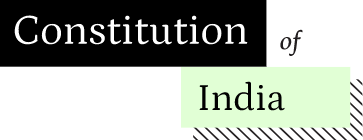As constitutions are made, they also grow. The makers of the constitution, therefore, must have a complete knowledge of the constitutional theories and practice of different ages and climes. If we look at this grand document, which in a few days time will be the Constitution of the Democratic Republic of India, it embodies the philosophy of the exponents of the revolutions which have gone before. If we look at its size, perhaps it is the bulkiest volume, and no other Constitution can stand comparison to it. But that in itself may prove to a shortcoming or a drawback. It seems as if we have not left anything to the future; we have tried to create a straight-jacket in which this nation must grow. Many things ought to have been left to conventions, to future events, aspirations and growth. A Constitution which is so big, is bound to lack in elasticity, and therefore, there is a possibility—a fear of its proving an impediment to the growth of the people. Still we must admit that it embodies the philosophy of the exponents of the revolutions which have gone before. It is strengthened by the political institutions which man in his experiment in democracy has so far evolved. The Preamble of the Constitution recognises the sovereignty of the people and is in complete accord with the philosophy of Rousseau’s Social Contract. It is consistent with the theory of Separation of Powers of Montesquieu. Its secular character is in conformity with the spirit of the Renaissance. It has taken the federal institution, first adumbrated as a measure for practical politics at the time of the American Independence. The distribution of powers in the Indian Federations has been fashioned after the Weimar Constitution of Germany in 1918. The Chief Executive of the Indian Republic is neither fully American nor completely French. He will not govern as much as the American President, nor will be like the French President, an automatic machine for collection of autographs of responsible Ministers. And yet, as under the Weimar Constitution of Germany, he has the potentiality of being a virtual dictator. Our long association with the Commonwealth has imported the cabinet form of government, along with the presidential type. Part III of the Constitution—the Fundamental Rights, and Part IV—the Directive Principles of the State-put forward in unmistakable terms the awareness of the makers of the Constitution of the principle of Rule of Law which is the bulwark of British liberty, as well as the impact of the Marxist philosophy on the life and society of man. Indeed the Constitution embodies eclecticism par excellence.
